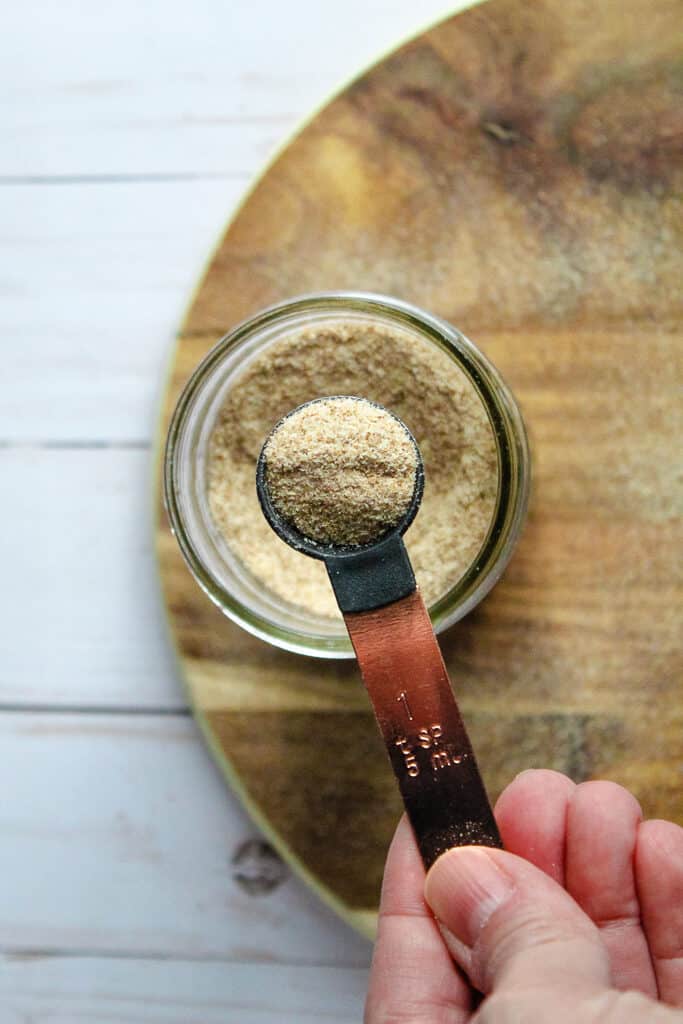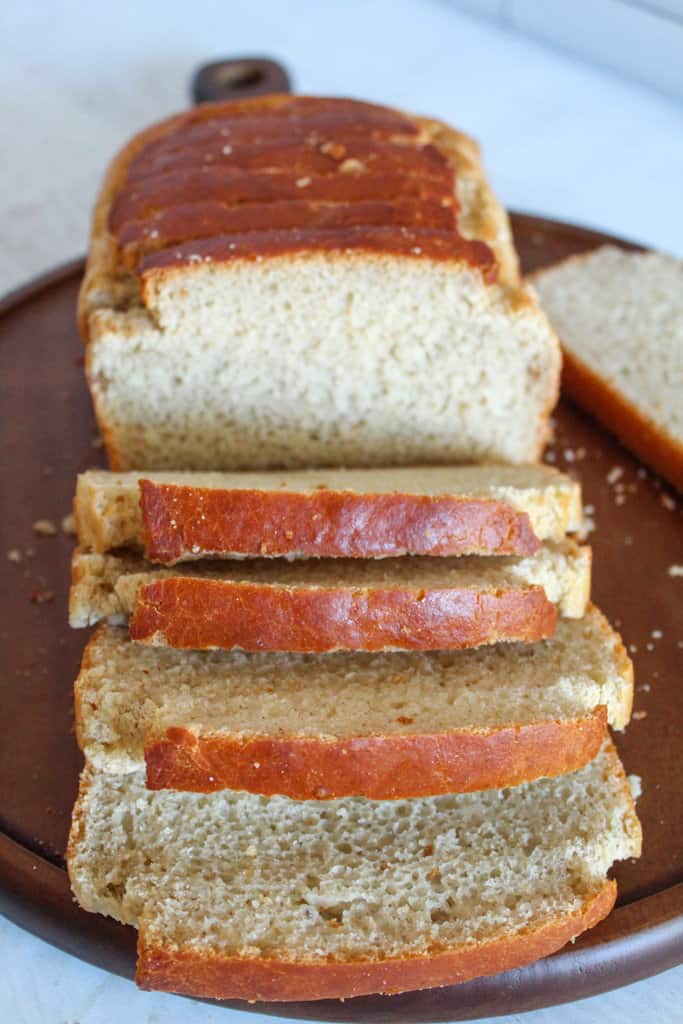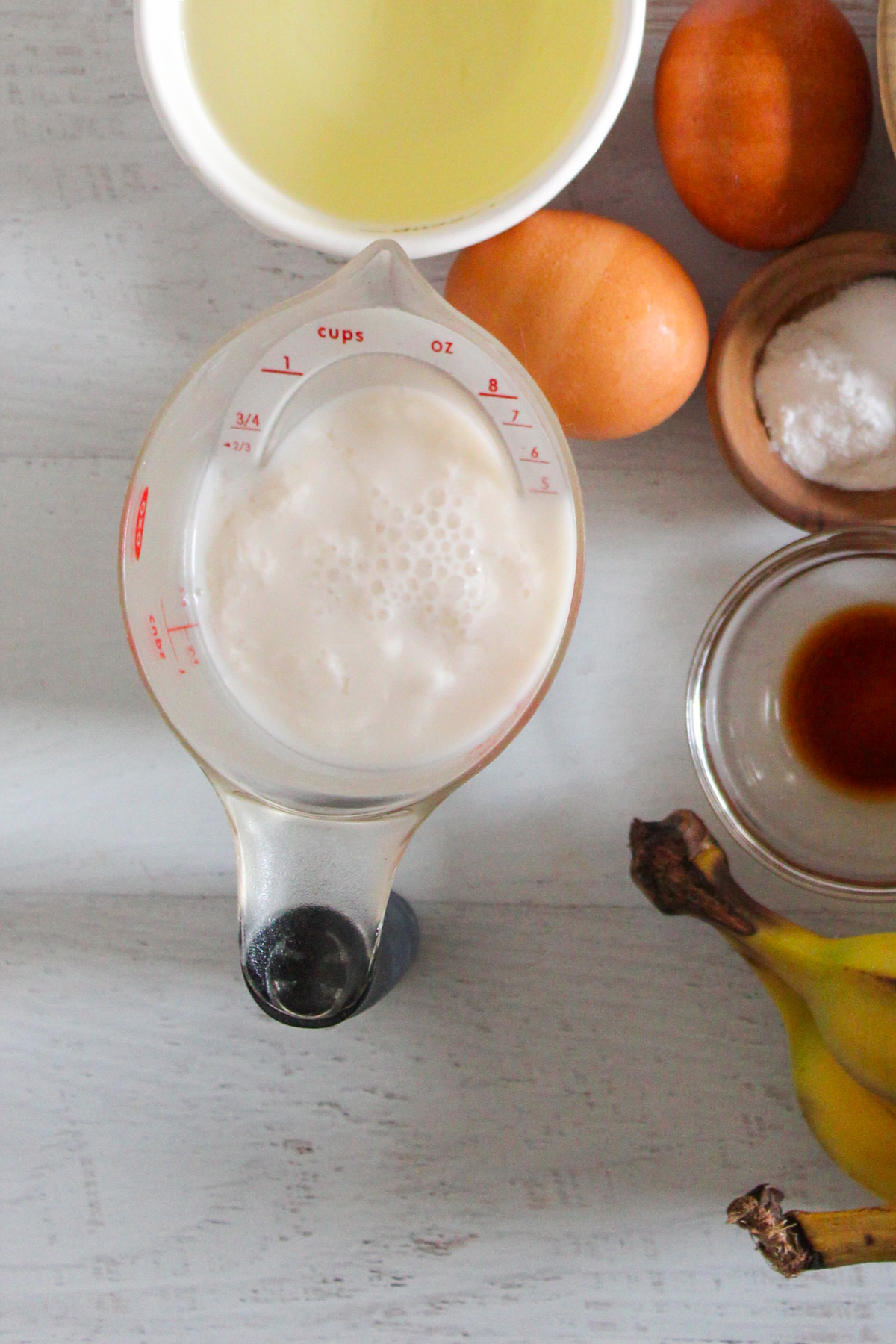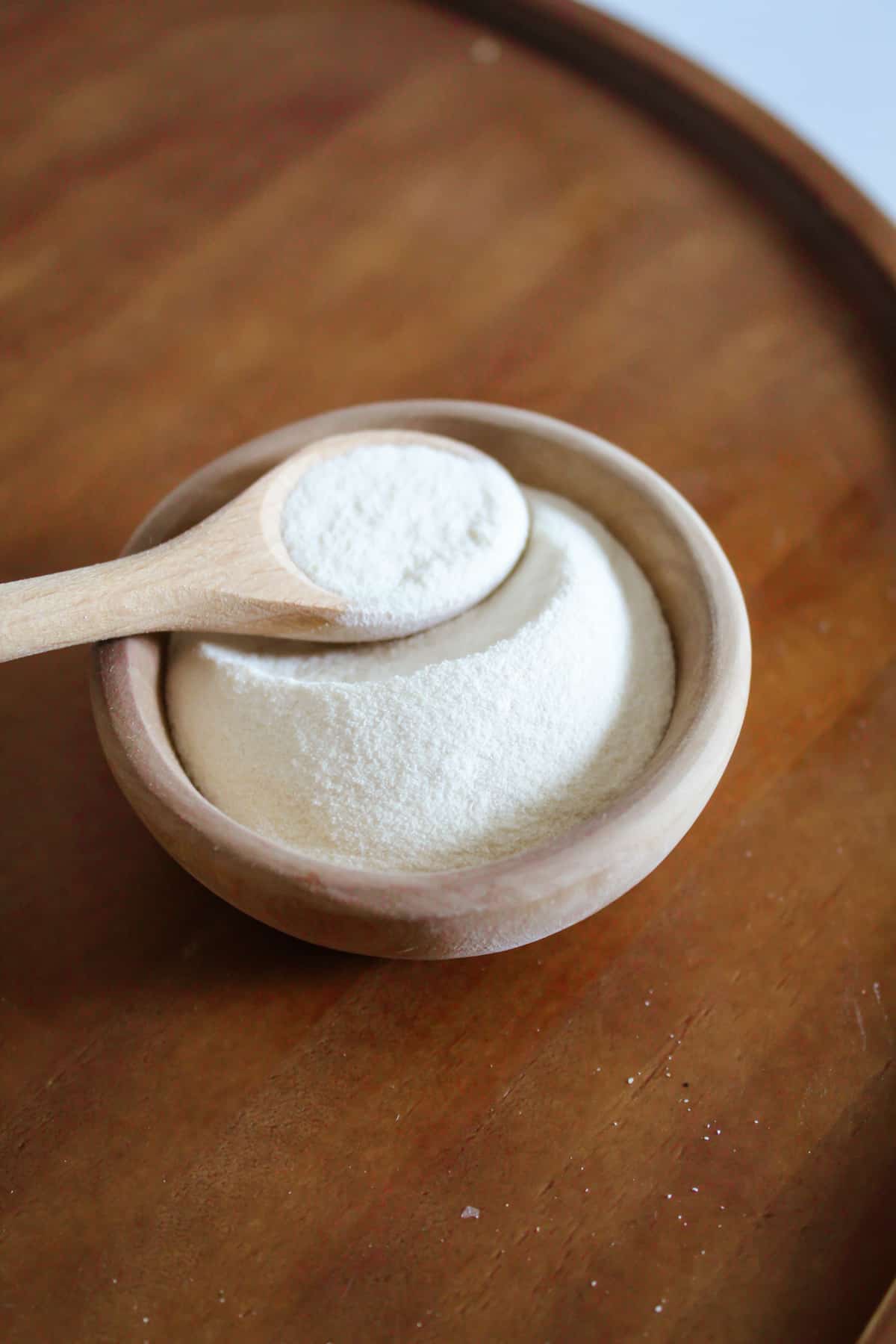Best Sorghum Flour Substitutes for Gluten-Free Baking
If you’re in the middle of a recipe that calls for sorghum flour but are all out, this is the post for you! I’ll break down everything you need to know about this unique ingredient and help you understand what you can use instead of it to still get a great texture and flavor. Find the best sorghum flour substitutes and more all below!
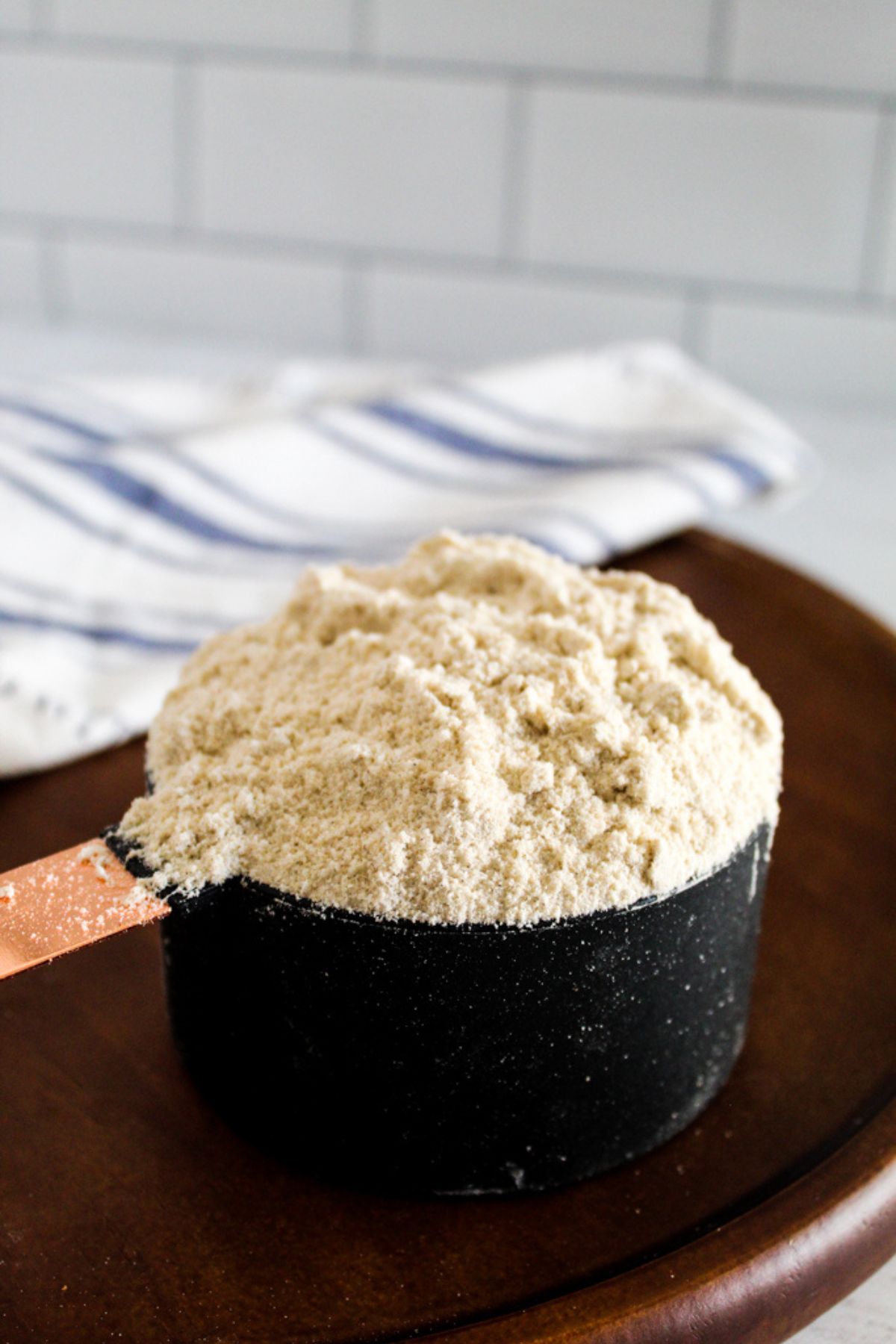
Sorghum flour is a bit of a fringe ingredient in gluten-free baking and there aren’t a ton of recipes that use it yet. But, it should certainly be more popular!
Table of Contents
Not only is it naturally gluten-free, but it is also high in protein and has a sweet flavor, which is why it’s been used to make molasses for centuries. It’s uniquely well suited to give your bakes the best texture and flavor!
Since it is uncommon, many of us don’t have it in our pantries yet, which is likely why you’re looking for a substitute. Or, if you are sensitive to sorghum in any way, you may be in need of a sorghum flour substitute to avoid a reaction. Whatever you’re looking for, I’ll help you find the perfect swap in the list below!
Learn more about why you’ll love baking with sorghum flour!
Key Takeaways: Sorghum Flour Substitutes
It’s always best to substitute flours with other flours with similar properties. Since sorghum is a cereal grain, similar to millet and teff, other milled cereal grains are the best alternatives. However, they do not all have the same texture or flavor in baking.
The best substitutes for gluten-free baked goods are generally millet flour, amaranth flour, or teff flour, or you can make a blend of these to get just the right texture and flavor.
If you are using sorghum flour as a thickener in savory recipes, replace it with another thickening agent, like corn starch, arrowroot powder, etc. You often need less of these starches than sorghum flour, so start with less and add more as needed.
What is Sorghum Flour?
Sorghum flour is a naturally gluten-free flour made by milling sorghum seeds into a fine powder. Sorghum is a popular cereal grain, similar to amaranth, that comes from a type of flowering grass native to Africa. It moved to the US in the 1850s during slavery, and continues to be used to make sweet sorghum syrup (also called sorgo) to this day.
The unique thing about these special little seeds is their sweet, sugary flavor. Ground sorghum grains are slightly sweet with an earthy, grassy flavor and are high in protein, which helps make your recipes soft with a fluffy texture.
Although it is often used as forage for livestock, sorghum is growing quickly in popularity as a popcorn alternative, fluffy cooked grain to replace quinoa or rice, and as a popular gluten-free alternative to whole wheat flour!
Nutritionally, sorghum is also rich in essential nutrients, B vitamins, dietary fiber, and plant-based protein, which can make it a great ingredient to incorporate into your diet if you have celiac disease or gluten sensitivity.
Recipes Using Sorghum Flour
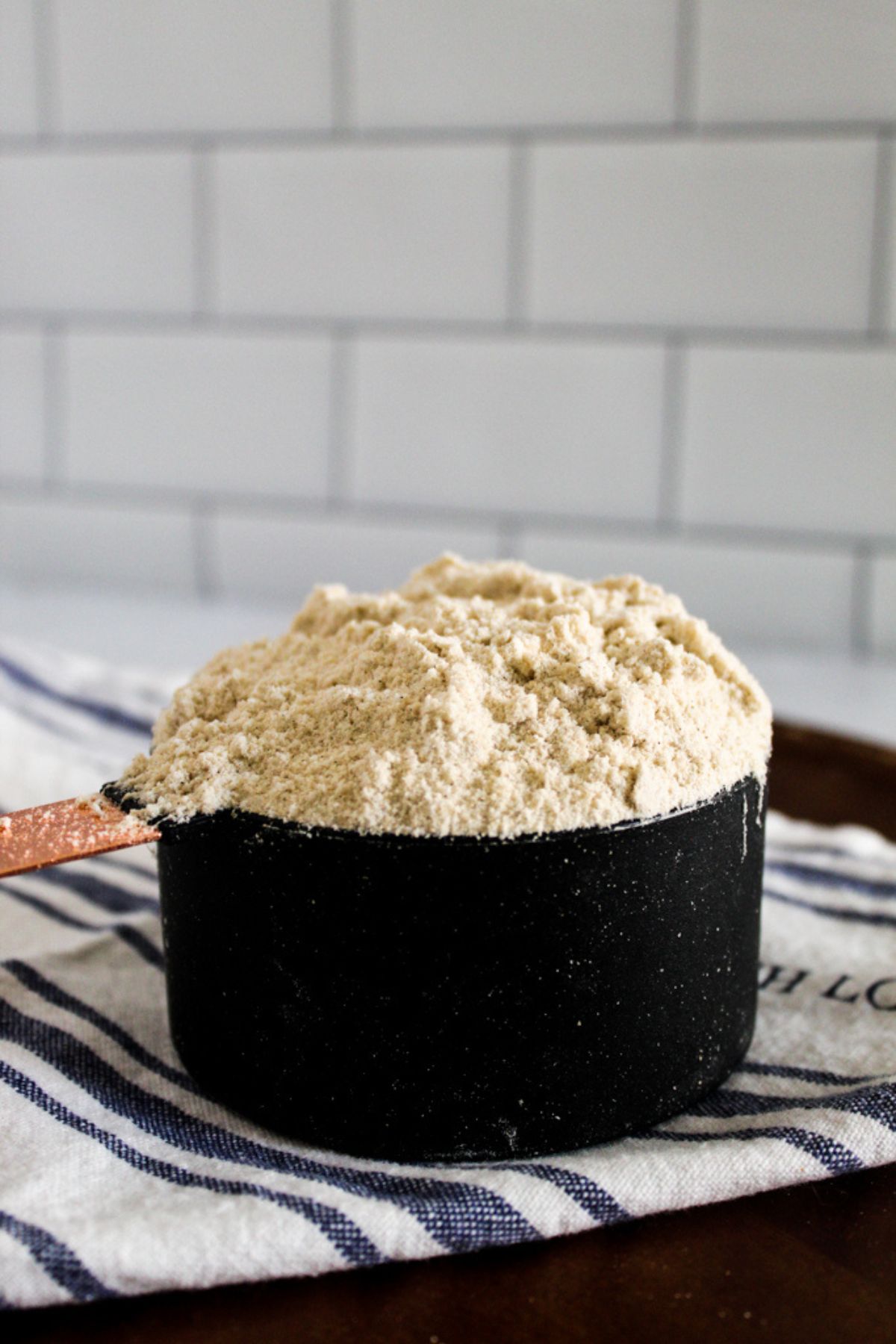
Best Substitutes for Sorghum Flour
Since sorghum is a small grass seed, it’s best to replace it with other types of seeds, which have a similar texture and flavor profile.
As always, start by considering the role of the flour in your recipe.
If it is a main ingredient, you’ll need to choose a substitute that is very close to it in texture, flavor, fiber, and protein content. If it is just part of a gluten-free flour blend, you can replace it with something that achieves that same final texture.
This complete Guide to Gluten Free Flour Substitutes has a handy chart that compares the protein and fiber, making it easier to understand which products can be used to achieve a similar final texture in your baked goods.
Millet Flour
I’ve grown partial to millet flour over the years and love to use it in cookies, biscuits, and more. Millet seeds are much smaller than sorghum grains, but has a soft, slightly sweet flavor, similar to sorghum, which can make it a great substitute!
Sorghum flour is one of the best substitutes for millet flour, and vice versa.
It can be used as cup-for-cup replacement for sorghum flour, however, millet has more fiber and can hold doughs together a little bit better. It may cause your baked goods to be slightly firmer than using sorghum on its own.
Amaranth Flour
Amaranth is perhaps one of the very best substitutes for sorghum as the plants are very similar. Both produce tall swaths of tiny little seeds that can be popped, ground, or added to many recipes.
The main differences between the two are that amaranth flour has even more protein and a stronger nutty flavor without the sweetness of sorghum. If you can’t eat sorghum for any reason, give amaranth a go!
Amaranth flour can generally be used as a 1:1 replacement for sorghum flour depending on the recipe.
Teff Flour
Teff is another ancient pseudo-cereal grain that’s been receiving a lot of attention today with gluten-free dieters.
These teeny, tiny seeds are packed with protein and a mild, nutty taste that makes them a great alternative to sorghum in most recipes.
Similar to millet flour, teff has more protein, so it can cause your baked goods to be slightly firmer than using just sorghum.
Sorghum flour is considered one of the best teff flour substitutes and they can be used interchangeably in recipes.
Quinoa Flour
The nutritional profile of quinoa flour is one of the closest matches to sorghum flour, plus you can blend quinoa seeds at home in a spice grinder, so it’s very convenient.
It has slightly more protein and slightly less fiber, but can often be used as a 1:1 replacement in your recipes. It can be helpful to add slightly more of your binding agent to compensate for the difference.
Buckwheat Flour
Buckwheat flour comes from the seeds of the buckwheat plant, known for their dark color and slightly bitter, nutty flavor.
It’s commonly added to pancakes and breads, and can be used as a sorghum substitute in gluten-free baking, although the texture, color, and flavor will be slightly different.
Buckwheat has slightly more protein and fiber than sorghum, so it may help hold your baked goods together a little better. Depending on the recipe, you can either use it as a 1:1 replacement and/or slightly reduce the binding agent.
Brown Rice Flour
Brown rice flour is common in many gluten free pantries because it’s just so versatile and has a lovely, mild flavor that works in a lot of recipes.
It has slightly less protein and fiber than sorghum flour, similar to quinoa flour, so you may want to add a little extra binding to get the texture just right.
Note: White rice flour is not interchangeable with brown rice flour in this instance, as it has nearly half of the protein of sorghum flour and about a quarter of the dietary fiber content. Find out more about brown rice flour and its substitutes here.
Oat Flour
Oat flour is one of the most popular gluten free flours out there and has a mellow, slightly nutty flavor that really blends into many recipes. It can sometimes be used as an all purpose flour alternative or added to a gluten free flour blend.
Since it is so common and easy to find, many gluten free bakers likely already have this one on hand. It has quite a bit more protein and slightly more fiber, which can actually work in your favor when substituting sorghum flour.
Replace sorghum flour with oat flour in a 1:1 replacement. You may need to add a little more liquid to reach the right consistency.
Almond Flour
This substitute may come as a bit of a surprise as almond flour has significantly more protein than sorghum flour. But, the mild, nutty flavor of almond flour stands in nicely for sorghum flour in many recipes.
If you substitute almond flour for sorghum flour, you may find that your baked goods have a slightly denser texture, and it’s important to note that almond flour is not the same as almond meal.
For the best results, replace sorghum flour with almond flour by measuring out the same weight (instead of measuring cup for cup).
Gluten-Free Flour Blend
My gluten-free flour blend is a good option for a sorghum flour substitute. It is a versatile mix that lends a great texture in baked goods.
If you have a store-bought gluten-free flour mix on hand, that can also work instead of sorghum flour. It is already designed to give you a nice texture and flavor and can often be used as a 1:1 alternative.
I’m partial to the King Arthur Measure for Measure Gluten-free blend. It tastes great, works well, and is dairy-free as well.
Notable Mentions
Sorghum flour can also be used as a thickener in savory recipes, like gravies and sauces. In this situation, you can generally replace it with another gluten-free thickening agent, like:
- Corn flour or cornstarch
- Tapioca flour
- Potato starch
- Arrowroot flour
However, these starches and flours have very little (to no) protein and fiber and cannot be used as a replacement in most baked goods.
As always, making substitutions with gluten-free flours is an art! It’s always best to follow the recipe exactly as written, but if you need a substitute for sorghum flour, these options should work in a pinch. Happy Baking!
